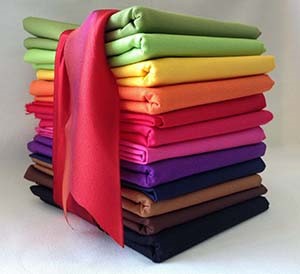
Vat dyes, the natural colouring dyes called so simply because of the method by which they are applied, used primarily to colour cellulosic fibre, such as cotton, are the primary choice when a high degree of fastness to industrial laundering, weathering and light are required. They are usually classified into four types based on temperature, amount of caustic soda, hydrosulphite and salt, used in the dyeing process:-
- IN - High temperature, High amount of caustic soda and sodium hydrosulphite.
- IW - Medium temperature, Medium amount of caustic soda and sodium hydrosulphite with salt added.
- IK - Low temperature, Small amount of caustic soda and sodium hydrosulphite with salt added.
- IN - Very high temperature, Very high caustic soda.

The various stages in the cotton dyeing with vat dyes are:
- Conversion of the hereto insoluble vat pigment into soluble sodium leuco-vat anions, known as reduction.
- Diffusion of these sodium leuco-vat anions into cellulosic fibres.
- Washing off to remove the excess alkali and reducing agent.
- Oxidation of this now-soluble dye into insoluble pigmentary form within the cellulosic fibres.
- Soaping to reorient the isolated vat pigment into a crystalline form.
Founded in 1976, Jagson Colorchem, based in Ahmedabad, is a leading manufacturer and global supplier of dyes, pigments, food colors, and auxiliaries. Colours is not just our business but also our passion. Follow us on Facebook and Instagram for more such interesting titbits!
Posted by : AyushGumdelwar | 29 May, 2025
